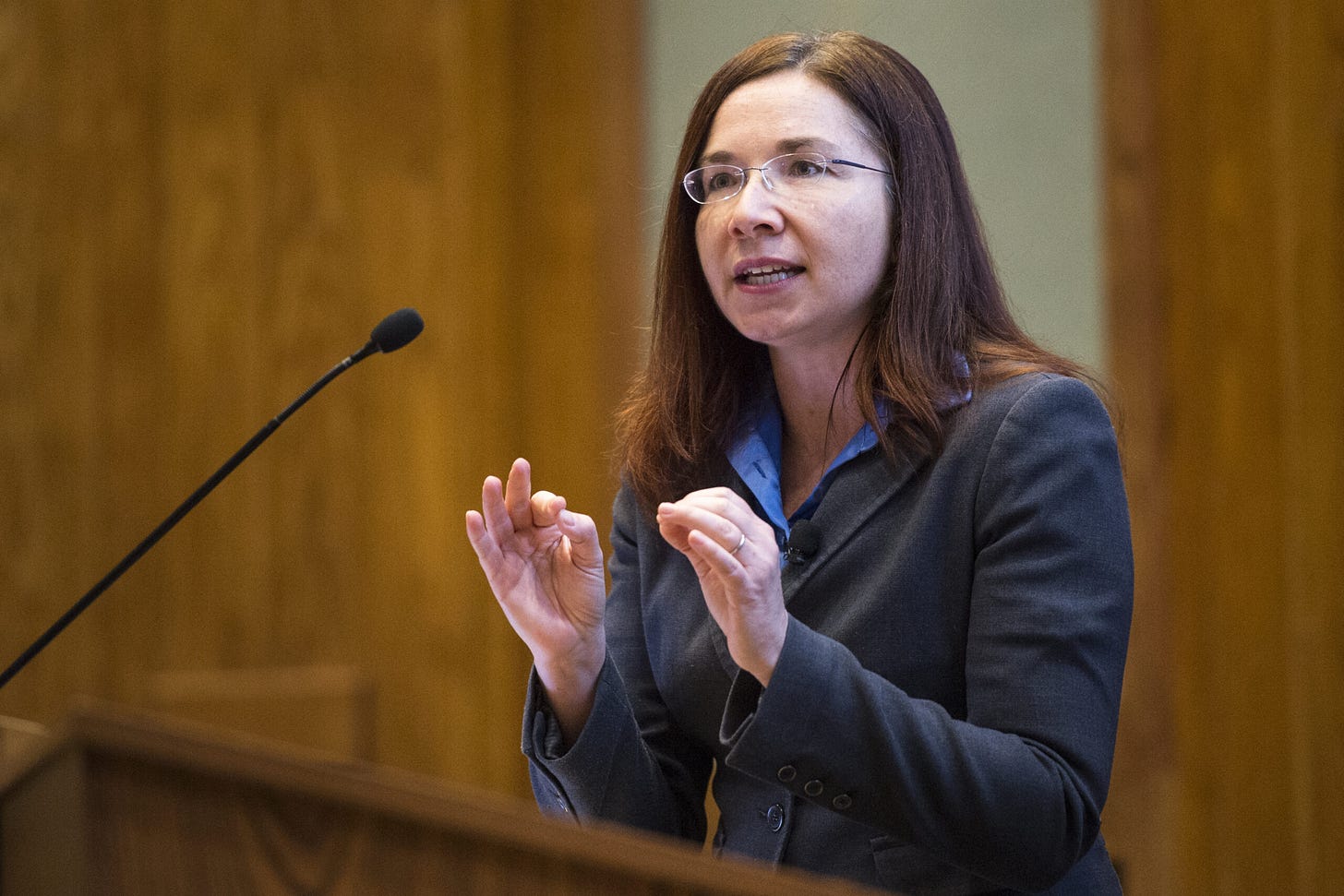How Katharine Hayhoe Spells Hope for the Earth -- It’s a Matter of Faith and Just Talking…
I’m not much of a fanboy. When Bruce Springsteen was performing a few years ago in a small venue off Broadway – on the same block where I was lodging – I declined to wait on line by the stage door to see the Boss (whom I’ve seen in five previous concerts).
I was fervent fanboy once, though. Decades ago I saw a recital by Kiri Te Kanawa, the New Zealand lyric soprano who had just performed at Chicago’s Auditorium Theatre. For an encore, she sung Puccini’s “O mio babbino caro” from his opera Gianni Schicchi. It was beyond exquisite. I was in tears. Sitting in a café next door, my brother Dan, my Dad and I were grabbing some dinner after the show.
“I bet I can get her autograph,” Dan said with his usual puckish confidence. The stage door was literally around the corner off an alley. “No way,” I retorted. Yet off he went.
“Got it,” he proclaimed minutes later, showing me her autograph on the program. Then off I scurried, not as confident, but still smitten by the divinity of her voice.
The stage door was surprisingly open, so I walked in. This was before the days of flack-jacketed, armed security details. I was immediately shocked, finding myself face to face with the kiwi diva. Struck with temporary aphasia, I couldn’t get any English words out of my mouth, so I suddenly chirped “che bellissima!” and kissed her hand. Why I suddenly became Marcello Mastroianni or chose to smooch her hand was a unique form of temporary insanity. A burly man approached, ready to tackle me, but not before she smiled graciously and signed my program.
My most recent near-fanboy experience came recently when Katharine Hayhoe, author of “Saving Us” and the chief scientist of the Nature Conservancy, came to keynote a sustainability research conference sponsored by my alma mater the University of Illinois System. I waited for her to sign her book then attended her stunning keynote, which closed the conference. (This was the second copy of her book I bought, which I gave to my daughter Julia. No diva hand kissing this time, though).
“Saving Us” and Dr. Hayhoe’s Substack newsletter are must reads for everyone interested in climate change and environmental action. As an “evangelical” Canadian climate scientist, she emphasizes the spiritual and social importance of climate action.
When I briefly conversed with her, she punctuated the necessity of seeing environmental protection as our most essential moral challenge. I asked her how faith communities could be more engaged in climate action, citing Pope Francis’s “Laudato Si” encyclical. She then hand wrote some resources for me to check out before U of Illinois Prof. Donald Wuebbles, one of our most prominent climate scientists, stepped up for a greeting hug. Katharine had been one of his students.
Katharine’s presentation was one of the best I’ve ever seen. She resonated with her resplendent smile. When she talks, Katharine passionately embraces complex data points with an infectious enthusiasm. It’s like she’s talking to primary school students, only with an underlying sophistication and conviction.
“What is sustainability?” she asked the enervated crowd of students, scientists and artists? “It’s living well on a finite planet. “But many people take a view that the earth is flat,” she continues, showing a slide illustration of a pancaked earth.
“The vast majority of people surveyed say they are worried about climate change, but 50% of those also say they feel helpless. Most people think the risks associated with global warming are far away.”
For meaningful action to take place, Katharine asserts, people need to have an emotional stake in change. It should be a matter of faith, although few people who describe themselves as “religious” talk about the environment. “We need to connect heart and hands.”
Perhaps we could start with revering the sanctity of nature. It’s not difficult to see arboreal groves as cathedrals (as my friend Burt does), canyons as chapels, mountain as steeples or prairies as pews. There is divine life in the sublime. It’s around us every day. We don’t have to go to the Galapagos Islands or Amazon rainforests to find it. It’s in our neighborhoods, backyards and even city parks. My daughter Julia recently shot a video of a beaver at work in the Lincoln Park lagoon on Chicago’s North Side. It’s essential to rediscover the enchantment of nature anywhere we can find it.
Extraordinary beauty, which is what che bellissima figuratively means, is present in our daily lives. It may be the gurgle of an infant, the smile of an elder or a bird in the backyard. As Katharine Hayhoe reminds us, we need to converse with each other to discuss, celebrate and preserve the beauty of our environment. That’s how we can begin to alter our path through a directed faith journey.
“It’s not just about saving the planet. It’s about saving us,” Katharine notes.
Vincit Omnia Veritas
(Truth Conquers All)
Thanks for reading and please share! If you enjoy my humble thoughts, please upgrade to a paid subscription. To contact me about speaking and writing or offer even more dangerous ideas, email me: johnwasik@gmail.com.
This essay was not produced by AI. I am a sentient writer, journalist, author, environmentalist, speaker, musician and elected county forest preserve commissioner who’s written 19 books and contributed to The New York Times, Next Avenue, Bloomberg and Reuters.
As a bonus, subscribers receive free access to my new book “The Natural Neighborhood,” which is serialized in this newsletter: A new chapter every month.



